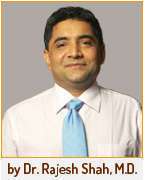
Sleep Apnea Treatment In Homeopathy
Sleep apnea syndrome (SAS) is a condition presenting with many pauses in breathing while a person is asleep. The condition was first described in the literature by Dickens in the Pickwick Papers and hence sometimes referred to as the Pickwickian syndrome.
A person has SAS if he stops breathing 5 or more times in 1 hour while asleep. Or, if he stops breathing 30 or more times during a 6-hour sleep period.
SAS Two Types: Central and Obstructive (OSAS)
In the central variety, the airways stay open, while the chest muscles and diaphragm stop working. This occurs mostly when the respiratory centers within the brain are impaired (as happens with drugs like heroin, and other opiates).
Premature children, persons on tranquilizers are more prone to CSAS. Obstructive sleep apnea is the most common category of sleep-disordered breathing. When sleeping, the muscle tone of the throat and neck, as well as the vast majority of all skeletal muscles, is reduced allowing the tongue and soft palate/oropharynx to relax. In the case of sleep apnea, this impedes the flow of air to a degree ranging from light snoring to complete collapse.
Conditions Associated with OSAS.
- Enlarged tonsils or adenoids (EBV infections),
- Left palate,
- Downs syndrome,
- Treacher Collins syndrome,
- Pierre Robin Sequence etc.
- Obesity.
Risk factors of SAS
- Most adults with sleep apnea are obese, with particular heaviness on the face and neck.
- Men are more often affected than women.
- Children and toddlers with defects like Down syndrome, cleft palate, etc.
Symptoms of Sleep apnea syndrome
Central sleep apnea symptoms:
- Excessive daytime sleepiness
- Irritability
- Lack of concentration
- Sleep deprivation
- Increased blood pressure & Heart disease
- Increased frequency of nocturnal urination.
- Esophageal reflux and heavy breathing at night.
Obstructive sleep apnea symptoms:
- Loud snoring
- Daytime drowsiness
- Memory loss
- Limited attention
- Morning headaches
- Lethargy
Associated health problems
- High blood pressure
- Stroke
- Heart attack
- Heart failure
- Pulmonary Hypertension
- Diabetes
- Kidney failure
- Metabolic syndrome
- Oxidative stress
- Sudden death
Sleep Deprivation due to Sleep Apnea and insufficient sleep are common and can present as insomnia, narcolepsy, or idiopathic hypersomnia (increased sleepiness). In infants and children sleep problems commonly present themselves as ADD or ADHD.
Conventional Treatment for Sleep apnea syndrome:
Lifestyle changes, such as avoiding alcohol and medications that relax the central nervous system (for example, sedatives and muscle relaxants), losing weight, and quitting smoking are implemented.
"Stabilizing" sleep routines (i.e., go to bed at the same time each night; try to sleep for a consistent number of hours, etc.)
Learning to play the didgeridoo (an Australian wind instrument that decreases the collapsibility of upper airways), can reduce the severity of OSAS.
Postural changes:
To prevent sleeping on the back just roll a small ball into the shirt. Stretching or elevating the Neck during sleep can improve the condition of sleep apnea. To stretch the neck a special pillow made for the purpose can be used. This method effectively reduces snoring and improves sleep. Sleeping in the elevated upright position might help in improving the oxygen levels in overweight people with sleep apnea. So elevating the head of the bed by providing a slant for the back might help.
Oral drug therapy
- Oral administration of the methylxanthine theophylline (chemically similar to caffeine)
- Use of anti-narcoleptic modafinil
- Neurostimulants by the use of pacemakers.
One method of treating central sleep apnea is with a special kind of continuous positive airway pressure (CPAP) machine providing additional pressure during inhalation, including a Spontaneous / Time (ST) feature. This machine will automatically deliver pressure to the patient if it fails to detect a certain minimum number of breaths per minute.
Another method is the use of dental appliances or devices, such as a tongue retaining device, mandibular repositioning splints, or MORA (mandibular orthopedic repositioning appliance.)
Surgical interventions:
- Tonsillectomy, if the tonsils are enlarged enough to cause the obstruction.
- Uvulopalatopharyngoplasty (UPPP) removes the tonsils, uvula (the tissue hanging from the back of the roof of your mouth), and a portion of the soft palate.
- Laser-assisted uvulopalatoplasty (LAUP) uses a laser to remove the uvula and part of the soft palate. It can stop snoring, but may not stop OSA.
- Tracheostomy is used in patients with severe OSA. A hole is made in the windpipe through which a tube is inserted. This is basically a "last resort" used when all else has failed.
- Rebuilding the lower jaw
- Surgery on the nose
- Surgery to treat obesity
Homeopathic Treatment for Sleep apnea syndrome:
Homeopathy is recommended for the treatment of Sleep apnea syndrome. Homeopathy addresses the underlying cause as well as the symptoms which are actually the end result of the disease process.